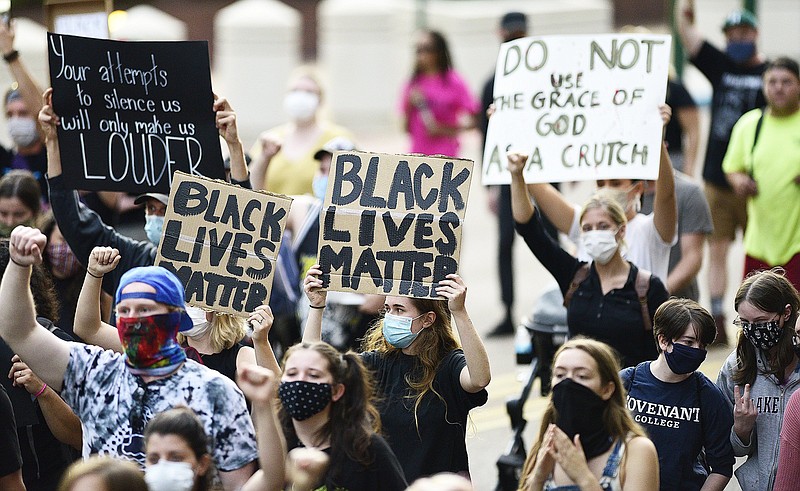Something has to give with policing and police training.
Is it OK for police to give in to the adrenalin of a foot chase and then punch or strike suspects, screaming all the while that they be still or put their hands behind their back - no matter that they're lying on their backs and fending off blows with their hands over their heads? And sometimes already handcuffed?
We see this too often in videos made of arrests - both here and elsewhere.
This past week, after a Chattanooga Police officer's footrace and punch video became public, the department fought the backlash by releasing more footage showing the aftermath of the Black suspect's (and two other suspects') alleged violent robbery of a local restaurant. It was that alleged robbery that led to the foot chase, according to officers.
Last year, we saw it in the cruiser cam video of Reginald Arrington Jr., a Black man swarmed by numerous officers as he walked - just walked - along Old Lee Highway. For five-and-a-quarter minutes into the 20ish minute encounter, Hamilton County deputies - all white - beat the already-handcuffed Arrington and held him to the ground, the video shows. Deputies claimed Arrington - again, he was already handcuffed - had been reaching for one of the deputy's gun.
Does either action justify a beating? No. And if we get to that point - the robbery, the chase, a stumble - the punches and batons thrown show we've already failed in policing.
Last year, in the wake of protests calling for police reform and accountability after the death of George Floyd under the knee of a Minneapolis police officer, Gov. Bill Lee announced "definitive action" in response.
Part of that "action," said Lee, included better access for local law enforcement to a little-known national database of decertified officers. With the governor (and even former President Donald Trump) on board and signing an executive order last June, local police Chief David Roddy and Hamilton County Sheriff Jim Hammond indicated support.
But talk about too little too late. This free hiring tool, the National Decertification Index, has been around for two decades. Two decades, and it's little known and even less used. No more than 6,000 of the nation's roughly 12,000 local agencies have access to the database maintained by the International Association of Directors of Law Enforcement Standards and Training.
As of Friday, it contained 29,688 decertifications reported by 45 states (not Georgia yet, by the way).
Two lackadaisical decades. That screams that police really haven't wanted to use it. Haven't really wanted to know. Haven't acknowledged that they and their training are more than just a part of the problem.
Only since 2015 has the Chattanooga Police Department used the list. In the past five or six years, CPD has requested or is in the process of requesting decertification for 26 of 28 fired officers. The Sheriff's Office has sought decertification for one of nine officers who were fired or resigned. The office's single request was rejected.
It is not mandatory for states to report each officer who has been decertified. Nor is it mandatory for local agencies to query the index before hiring. And it's not open to the public. Two decades.
"The days are over when police officers or agencies can cover for other agencies or other police officers. We just can't afford to do that anymore," said Hammond, who recently came under fire for a second time by local clergy who are calling for him to resign after they've counted 19 separate incidents of what they call deputies' "brutal treatment" of citizens since 2008. Hammond last week said he advocates making the National Decertification Index's finalized information public.
Hammond's chief deputy, Austin Garrett, says he thinks the public should be able to look up whether an officer is currently certified (barring personal contact information), just like any other professional licensed by the state. Roddy thinks making the list public needs more discussion. Bradley County Sheriff Steve Lawson says it should "remain a tool for law enforcement agencies only."
Again, when a former officer's name makes this list as "decertified," we've long-since failed any reasonable policing test and we've waited too long to protect both the public and other officers.
One key lies in choosing officers with the right temperament and in training them to better use that right temperament.
Another key is in not asking a police officer to be a social worker one minute and training him or her to be a militarized gun wielder the next. Think about that. What training can there possibly be to bridge those two job requirements that often occur within mere seconds of each other?
These are clearly the areas where police reform must start.
And it must start now - not in another two decades. Or even in another two weeks.
